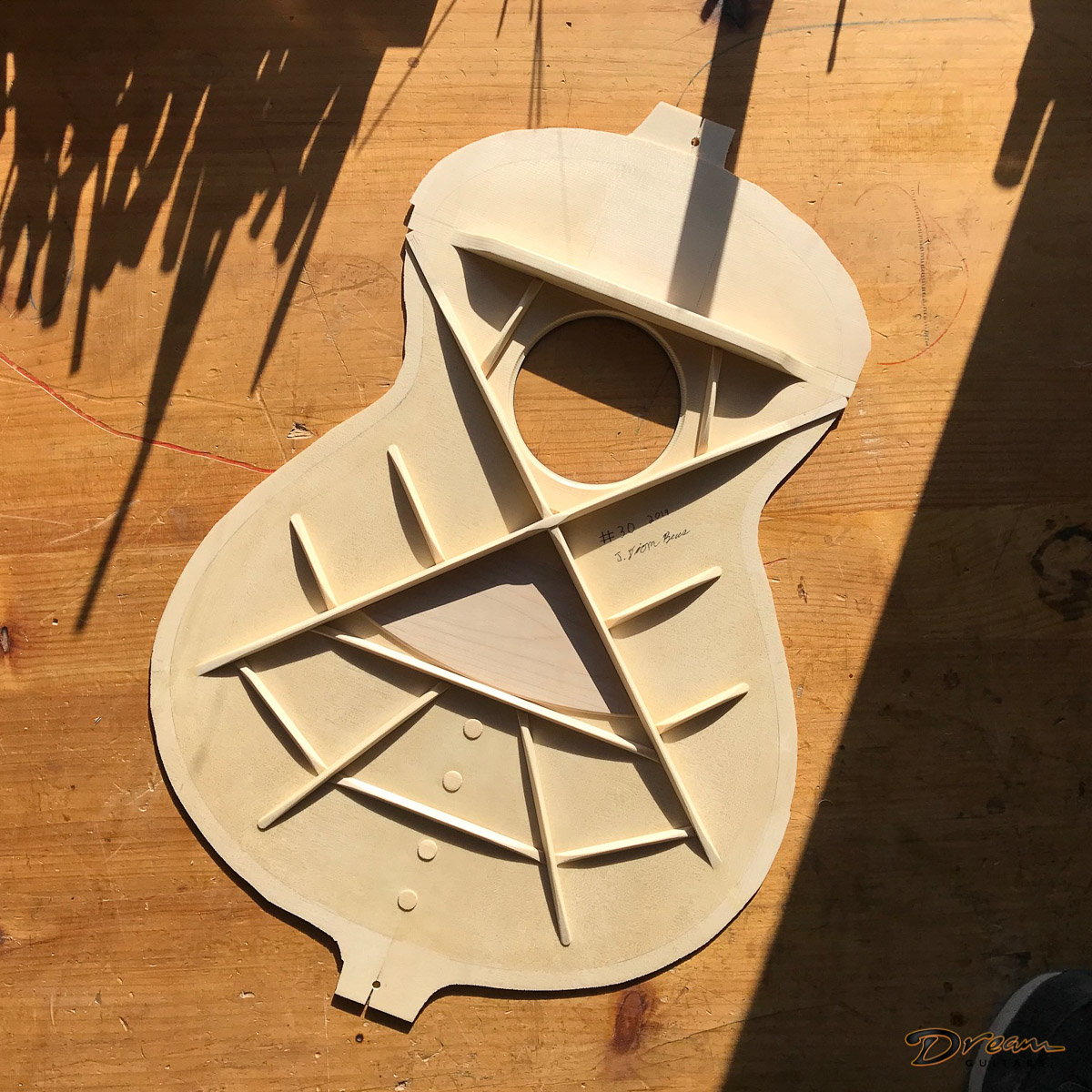We’re excited to announce our latest partnership with Dion James of Alberta, Canada, with an incredible No. 4 model in Birdseye Maple & Italian Spruce. Dion’s guitars let the quality of the materials, and the skill of the craftsperson, speak for themselves. These instruments have modern curves, and are intimately familiar to the ears as well as much as the hands. Dion was kind enough to chat with us a bit about life and lutherie; read on for a better understanding of the man behind the guitar, and check out our No. 4 here: https://www.dreamguitars.com/shop/2019-dion-04-european-birdseye-maple-italian-spruce-29.html.

LW: Who are some of your favorite guitar players? Have you built instruments for any of them?
DJ: Hmm, that’s a tough one. There are so many good players out there. I’m a big fan of Nick Drake, he had such an interesting approach to the acoustic guitar. I think Johny Greenwood of Radiohead is a genius, such a subtle touch with no ego attached to his playing. Will McNicol is a great player and composer. I’m a big fan of Tom Brosseau, and was lucky enough to have him tour with one of my guitars, in fact it’s the second of the two guitars available through Dream Guitars. Tom and I are in conversation about building him a signature model in the future, fingers crossed we’re able to make it work.

LW: Let’s talk wood. What are your favorite tonewoods to work with, what makes them suited for your particular style?
DJ: My favorite tonewood changes all the time. At present I’m smitten with Maple. I build using a Nomex-centered, “hollow core” back, which creates a very loud guitar with tons of sustain. As such, I prefer lightweight woods as they add to the quickness of response. Of course, different players have different needs and I employ the proper tonewood for each client.

LW: Please describe your goals in voicing an instrument. How did you first find your voice, and how do you continue to experiment?
DJ: I use a symmetrical bracing pattern and employ many small braces, with the goal of even distribution of stiffness. I use deflection testing, frequency testing, and good old feel to bring my guitars into their final shape. I’ve been pushing towards my voice for over a decade now, and it was about four years ago that I really found my sound. I would describe my voice as sweet, voluminous, even, and articulate. At this point the bones of my instruments are pretty set, though I’m always tweaking the details. As of late I’ve really been pushing away at the perimeter of the soundboard, decoupling braces from the rim, allowing the soundboard a greater range of motion. I can get away with this loosening of the soundboard structure because of my very rigid rim and upper bout. These structural elements free the soundboard from some of its load-bearing duty, allowing it to be optimized to the movement of air and thus the production of sound.

LW: Where do you think your building style will take you in the next five years?
DJ: The guitar is made of so many little decisions, each time I reach my goals a new level of detail appears. I’d say that the next five years will take me deeper into the minutiae, with a focus on continuous refinement. My instruments, by design, are free of heavy ornamentation. I’ve always focused on structure, lines, and continuity. I suspect the next five years will be all about refinement, of both sound and design, and working on things I can’t yet see.

LW: Any interesting facts about your technique or shop arrangement that you’d like to share? Photos always welcome.
DJ: Certainly. I would describe my technique as a blended model, never purist. I believe in accessing the history of vintage instruments, taking the positive and modifying where we’ve acknowledged structural flaws. I use hand tools, because I love the process and because they are often the best tool for the job, but I’m not afraid to employ the accuracy of a machine. A good machine can save time and energy, freeing me up to focus on the elements that are most important.
In terms of shop arrangements, I share a shop with other builders, and always have. The cross pollination, even between the experienced and inexperienced builder is so valuable to my process. I’ve got something to learn from everyone.
LW: What do you enjoy doing outside of building instruments?
DJ: I’m a person of many interests. I’ve had to pare things back because I’m also the kind of person who want to pursue things to the tiniest detail, and that requires more time than the days and weeks offer. Gardening is a great passion of mine. My partner and I grow and preserve a lot of our own food. I’m a year-round cyclist, and I love riding my skateboard. My partner is pregnant and I anticipate great joy in spending time with our child!
LW: If you had not become a guitar maker, where do you think life would have led you?

DJ: I’m certain I’d still be self-employed. Having grown up on a family farm, the concept of having a boss is fairly foreign to me. I’d likely be an urban farmer. I’m endlessly fascinated by the untapped potential of the urban landscape to produce food and the healthy relationships that come from the attachment to one’s sustenance.
LW: What music are you listening to right now?
DJ: It’s all over the place, but I’ve really been into 80’s and 90’s female-fronted R&B lately. Sade, Janet Jackson, etc. So good!
LW: If you could choose only one tool to work on guitars, what tool would that be?
DJ: It’s really hard to beat the feel of a well-honed plane, probably my Lie Nielsen jointer plane.









